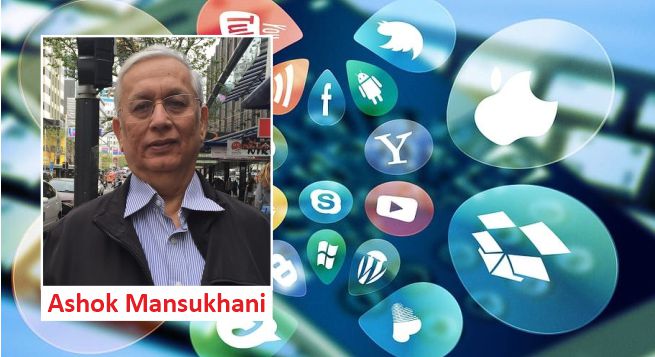-By Ashok Mansukhani
On 25th February 2021, the new Information Technology (Intermediary Guidelines and Digital Media Ethics Code) Rules 2021 was notified and came into effect immediately.
A detailed analysis is provided below:
The Government of India Press Note issued on 25th February 2021 states a growing concern about the “lack of transparency, accountability and rights of users of digital media”. The Note states that “after elaborate consultation with the public and stakeholders”, the Information Technology (Intermediary Guidelines and Digital Media Ethics Code) Rules 2021 had been framed in exercise of powers under Section 87 (2) of the Information Technology Act 2000 and in supersession of the earlier Information Technology (Intermediary Guidelines) Rules 2011.
Section 87 (2) of the Information Technology Act 2000 takes its power from Section 87 (1) of the Information Technology Act 2000, which gives subordinate legislation power to the Central Government to “make rules to carry out the provisions of the Act”.
The Press Note makes it clear that in “finalizing these Rules, both the Ministry of Electronics and Information Technology and the Ministry of Information and Broadcasting undertook elaborate consultation among themselves to “have a harmonious, soft-touch oversight in relation to social media platform as well as digital media and OTT platforms etc.” (NOTE: On 9th November 2020, the President issued a notification under Article 77(3) of the Constitution amending the Government of India (Allocation of Business) Rules 1961 giving power to the Ministry of information and Broadcasting to regulate online news platforms and OTT platforms.)
The Press Note acknowledges that Digital India has become a movement which is empowering common Indians with the power of technology. The extensive spread of mobile phones, the Internet etc., have also enabled many social media platforms to expand their footprints in India. People are also using these platforms in a very significant way.
For the first time, the Government released figures to show the extent to which social media usage has spread in India:
- WhatsApp Users: 53 Crores.
- YouTube users: 44.8 Crores.
- Facebook Users: 41 Crores.
- Instagram Users:21 Crores.
- Twitter Users: 01.75 Crores.

The Press Note states that the Government “acknowledges and respects the right of every Indian to criticize and disagree as an essential element of Democracy. India is the world’s largest open Internet Society, and the Government welcomes social media companies to operate in India, do business, and earn profits. However, they will have to be accountable to the Constitution and laws of India.”
The Press Note states that while the proliferation of social media and empower citizens, on the other hand, has given rise to some serious concerns and consequences that have grown manifold in recent years. These concerns have been raised from time to time in various forums, including Parliament and its committees, judicial orders, and civil society deliberations in different parts of the country.
The Press Note goes on to enumerate some very “disturbing developments”, including:
- Fake news leading to many media platforms creating fact check mechanisms.
- Morphed images of women in content related to revenge porn have threatened the dignity of women.
- Social media has been misused for setting corporate rivalries in a blatantly unethical manner, becoming a significant concern for businesses.
- Abusive language, defamatory and obscene content and blatant dis-respect to religious sentiments platforms are growing.
- Social media has been misused by criminals, anti-national elements including inducement for recruitment of terrorists, circulation of obscene content, the spread of disharmony, financial frauds incitement to violence, public order etc.
The Press Note states that there is no robust complaint mechanism wherein the ordinary users of social media and OTT Platforms can register their complaint and get it to be resolved within a defined timeline. The absence of a robust grievance redressal mechanism has left the users dependent on social media platforms’ ‘whims and fancies.’
The Press Note makes a significant observation that social media intermediaries are no longer limited to playing the role of your intermediary, and often they become publishers. It claims that the new Regulations“a fine blend of liberal touch with a gentle self-regulatory framework.”
The Regulations work on the existing laws and statutes of the country, which are applicable to content whether off-line for on the in respect of news and current affairs, Publishers are expected to follow the journalistic conduct of the Press Council of India and the program code under the cable television network fact which are already applicable to Print and TV. Hence the Press Notes states that only a level playing field has been proposed.
The Press Note highlights foursignificant developments (which prompted the Government) to issue the new Regulations.
- 1. In a suo writ petitionin the Prajwala case in Criminal Petition No 3 of 2015 in an order dated 11th December 2018, the Supreme Court had observed that “the Government of India should frame necessary guidelines to eliminate child pornography and view the images, videos, and sites in content hosting platforms and other applications”.
- This order arose out of a letter dated 18th February 2015 on videos of sexual violence and recommendations and was converted into a suo-moto criminal petition where in the Supreme Court directed the Government to frame necessary Guidelines and Standard Operating Processes to eliminate child pornography, rape and gang rape imageries, videos and sites in content hosting platforms and other applications.
- 2. The Supreme Court vide order dated 24th September 2019 and directed the Ministry of Electronics and Information Technology for notifying the timeline concerning completing the process of notifying the new Rules. This order arose out of a transfer petition filed by Facebook Incorporated versus Union of India in Transfer Petition number 1943 – 1946/2019. The Supreme Court observed that various petitions had been filed in different High Courts in which petitioners had raised various grievances with regard to the intermediaries (social media platforms as defined in the Information Technology Act 2000. The Supreme Court further observed that in some petitions, it was claimed that Aadhar should be linked to the identity/account of each user of the services provided by the intermediaries. In some other cases, the agreement was that the intermediaries are not providing information regarding the originator of the communication content which has been circulated transmitted shared on the platform provided by the intermediaries.
The Supreme Court further observed two sets of petitions, one of which wanted that all such matters be transferred to the Supreme Court. The other batch of petitions challenged the various interim orders passed by the Madras High Court in Writ Petition number 20214 of 2018 in Writ Petition number 20774 of 2018. The Court observed that the prayer for linkage to Aadhar been withdrawn in the Madras HC. While refusing to express any views on the merits of the transfer petition for the orders challenged from the Madras High Court, the Supreme Courtmade somevery significant observations.
- It stated that “the main issue arising in this petitionis how and in what manner the intermediaries should provide information including the names of the originators of any message and content information shared on the platform run by these intermediaries. There are various messages, and the content spread/shared on social media, some of which are harmful. Some messages can incite violence. There may be messages which are against the sovereignty and integrity of the country. Social media has become a source of a large amount of pornography. Paedophiles use social media in a big way. Drugs, weapons, and other contraband can be sold through the use of platforms run by intermediaries. In such circumstances, it is imperative that there is a properly framed regime to find out of persons/institutions/parties were the originators of such content/messages it may be necessary to get such information from the intermediaries.”
- Supreme Court noted that Section 87 of the Information Technology Act requires the intermediaries to furnish some information, and the Information Technology (Intermediaries Guidelines) Rules 2011 have been notified. Certain information has to be stored and provided in accordance with the rules. Some intermediaries have stated that they cannot provide information with regard to content in relation to originators because they have into infection and are not in a position to find out who is the originator or what is the content. The Court noted that the technologies are available to enable the intermediaries to de-encrypt the encrypted message as and when the need arises.
- The Court highlighted that de-encryption, if available, could defeat the fundamental right to privacy, and the encryption of messages may be done under exceptional circumstances but must be ensured that the sovereignty of the State and the individual’s dignity are required to be protected. For detection, prevention, and investigation of certain criminal activities, it may be necessary to obtain such information. De-encryption and Regulation of the originator’s identity may also be necessary in certain other cases that had been highlighted earlier. For further observed that law, this regard is still at a nascent stage in technology keeps changing every day if not every hour. What was not clear how intermediaries who are based abroad do not have a grievance officer posted in the country can be compelled to reveal this information.
- It concluded by observing that an individual may have the right to ask for such information to protect his reputation and dignity kept that the Court was not sure on the new guidelines had been framed to date.
- 3. The Press Note refers to a calling attention notice on the misuse of social media and spread of fake news in the Rajya Sabha and the fact that the Minister had conveyed to the House on 26th July 2018 the resolve of the Government to strengthen the legal framework and make social media platforms are accountable under the law.
- 4. The Ad Hoc Committee of the Rajya Sabha made its report on 3rdFebruary 2020 after studying the nomination of pornography and social and its effect on children and society as a whole recommended for its enabling identification of the first originator of such contents.
-
NEW GUIDELINES ON SOCIAL MEDIA (To be administered by the Ministry of Electronics and Information Technology.
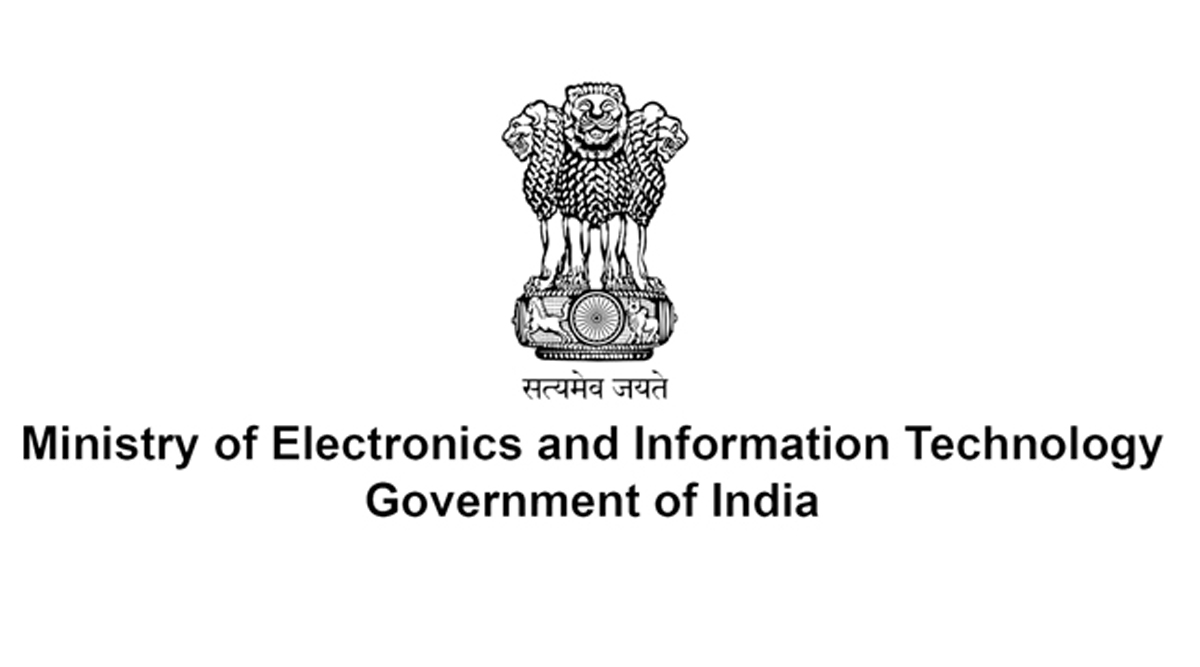
The new Regulations’ key highlights shift the burden conclusively on to the intermediaries but assert ultimate Government oversight and control.
These are discussed below:
- The intermediary shall prominently publish on its website, mobile application of the as the case may be, the rules and regulations, privacy policy and user agreements for access or usage of its computer resource by any person. Rule 3 (1)(a).
- These Rules shall inform the user of its computer resource not to post, display, upload, modify, publish, transmit, store, update or share any information that belongs to another person to which the user does not have any right. It goes on to list nine specific instances of what cannot be carried. Rule 3 (2) (b).
- An intermediary, upon receiving actual knowledge in the form of an order by a court of being notified by the appropriate Government or its agencies to the Authorized Officer, should not post or publish any information which is prohibited under any law in relation to the interest of the sovereignty and integrity of India, public order, friendly relations with foreign countries etc. Rule 3 (d).
- The data retention period has been doubled to 180 days for investigative purposes-Rule 3 (1)(h).
- For the benefit of users, the new Rules mandate intermediaries, including social media, to establish a grievance redressal mechanism for receiving and resolving complaints from the users of victims. The intermediaries will have to appoint a grievance officer in India to deal with such complaints and share each officer’s name and contact details. The Grievance Officer shall acknowledge the complaint within 24 hours and resolve it within 15 days of receipt. Rule 3 (2).
- To ensure online safety and dignity of users, especially women users, intermediaries shall remove or disable access within 24 hours of receipt of complaints of contents that explores the private areas of individuals, show such individuals in full or partial nudity or sexual Act or the nature of impersonation including morphed images etc. Such a complaint can be filed by the individual or by any other person on their behalf. For this, a mechanism is to be provided by the intermediary. Rule 3 (2) (b).
- There shall be two categories of social media intermediaries to reduce the compliance of smaller platforms, and the rules make a distinction between social media intermediaries and significant social media intermediaries. The Government is empowered to notify the threshold of the user base that will distinguish the two. NOTE: The Government has subsequently clarified that social media companies with more than 50 lakh registered users will be considered “significant social media intermediaries” and subjected to additional due diligence.
- Significant social media intermediaries will have to take the following additional steps:
- They will appoint a Chief Compliance Officer to ensure compliance with the Act and Rules and be a senior person and resident in India. Rule 4 (a).
- They will appoint a Nodal Contact Person for 24 x 7 coordination with law enforcement agencies and be a resident in India. Rule 4 (b).
- The intermediary will appoint a Resident Grievance Officer who shall perform the functions mentioned under the grievance redressal’s mechanism and a resident in India. The Grievance Officer shall acknowledge the complaint within 24 hours and resolve the complaint within 15 days. Rule 4 (c.)
- The intermediary will publish a monthly compliance report mentioning details of complaints received and actions taken, and details of content removed proactively by the significant social media intermediary. Rule 4 (d).
- Significant social media intermediaries providing messaging services shall enable identification of the first originator of the information that is required for prevention, detection, investigation, prosecution and punishment of an offence related to the sovereignty and integrity of India, the security of the State, when relations with foreign countries, public order or incitement to an offence relating to the above all in relation with the great, sexually explicit material for child abuse material punishable with imprisonment for a term of not less than five years. Intermediaries shall not be required to disclose the contents of any message or any other information to the first originator. This will have to be done if an order under section 69 of the Information Technology Act is issued or a Judicial order is given. Rule 4 (2).
- NOTE: This is a sweeping regulation that has unique challenges for foreign intermediaries. Critics fear that this Regulation can lead to breaking end-to-end encrypted communications and diluting privacy rights in the absence of codification of privacy laws.
- New measures under Rule 4 (4) provide for the endeavour by intermediaries using automated tools or other mechanisms to proactively identify information that depicts any act or stimulation in any form depicting rape, child abuse or conduct.
- The significant social media intermediary shall have a physical contact address in India published on its website or mobile app, or both. Rule 4 (5).
- Every significant social media intermediary must implement a mechanism whereby they receive complaints and grievances concerning their failure to comply with due diligence requirements and the rules. Each complaint should be given a ticket number, and intermediaries will have to explain the action taken or not taken on the complaint received. An opportunity is shown before any final action is taken. Rule 4(6).
- Users who wish to verify their account voluntarily shall be provided with an appropriate mechanism to verify the accounts and be provided with a demonstrable and visible mark of verification. Rule 4 (7).
- In cases where the significant social media intermediary removes or disables access to any information on their own accord and apply intimation of the same shall be communicated to the user were shared that information with the notice explaining the grounds and reasons for such action. Users must be provided with an adequate and reasonable opportunity to dispute the action taken by the intermediary Rule 4 (8).
- Safe Harbour provisions (available under Section 79 of the Information Technology Act) gives the intermediaries protection from liability is that could arise from any legal action initiated based on user-generated content. The new rules prescribe due diligence that intermediaries, including social media intermediaries, must follow. In case due diligence is not followed by the intermediaries, safe harbour provisions will not apply to them. Rule 7.
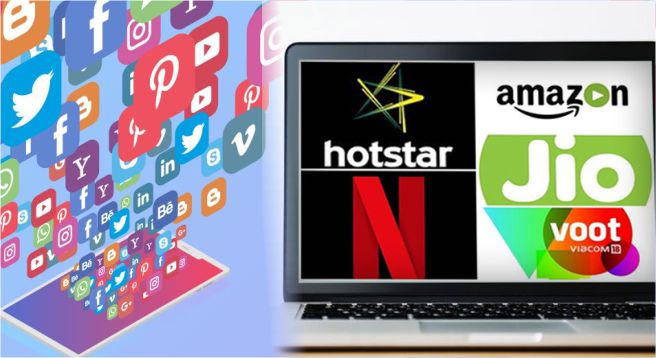
-
DIGITAL MEDIA ETHICS CODE RELATING TO DIGITAL MEDIA AND OTT PLATFORMS (To be administered by the Ministry of Information and Broadcasting).
The Press Note states that there has been widespread concern about digital content issues on digital media and OTT platforms. Various sections of society, including civil society, the makers, political leaders, including Chief ministers, trade organizations and associations, have voiced their concern and highlighted the imperative need for a complaint institutional mechanism. There have been many court proceedings in the Supreme Court and High Court where courts have urged the Government to take suitable action.
The Press Note further states that while the overall architecture shall be under the Information Technology Act, which governs digital platforms, issues relating to digital media OTT and other creative programs on the Internet shall be administered by the Ministry of Information and Broadcasting.
The Press Notes states that OTT players were requested to develop a self-regulatory mechanism. NOTE: This appears to ignore that an OTT Toolkit was prepared by significant OTT Networks and was shortly to beput into operation voluntarily by the OTT Industry later in 2021.
The Press Note further states that the Government also studied models in Singapore, Australia, the European Community, and the UK and gathered that most of them have an institutional mechanism to regulate digital content or are setting up one.
The Press Note states that the rules establish a “soft-touch regulatory architecture”, a “Code of Ethics”, and a “three-tier grievance mechanism” for news publishers and OTT platforms and digital media. These movies are notified under Section 87 of the Information Technology Act. These new Regulations are summarised below:
- News and current affairs content have been defined as newly received or noteworthy content, including analysis, especially about recent events primarily of social-political economic or cultural nature made available over the Internet or computer networks—Rule 2 (m). (Note Foreign networks will get covered under Rule 8 (2).)
- In the Index, a Code of Ethics prescribes the guidelines to be followed by OTT platforms and online news and digital media entities.
- The OTT platforms are described as publishers of online curated content the rules. It would self-classify the content into five age-based categories as under:
- U- Universal.
- U/A. – +7.
- U/A-+13.
- U/A- +16.
- A- Adult.
- Publishers of online curated content will have to prominently display the classification ratings specific to each range of them together with the content descriptor informing the user about the nature of the content and advising on the description if applicable at the beginning of every program enabling the user to make an ‘informed decision’ before watching the programme.
- Publishers of news on digital mediawould be required to observe the norms of journalistic conduct of the Press Council of India and the program code under the Cable Television Network Regulation Act, thereby providing a level playing field between the off-line Print/ TV and digital media. Note: The Publishers will have to ensure that content that is prohibited under any law is not published, transmitted. (Paragraph 1 of the Appendix).
- A three-level grievance redressal has been established under the Rules with different levels of self-regulation. These are:
Level 1,Self-Regulation by the Publishers.They will have a Grievance Officer stationed in India to resolve all grievances in 15 days.Rule 11.
Level 2,Self-Regulating Bodies of the Publishers.(These will be headed by a Retired Supreme Court judge,a High Court, or an eminent person. It will have six members.The Bodies will be registered with MIB. The Bodies will oversee adherence by the Publisher of the Code of Ethics and address unresolved grievances within 15 days.Rule 12.NOTE: The Ministry will have the power to ‘approve’ the composition of the Body. This detracts from a genuinely self-regulating Industry Body.
Level 3 The Ministry of Information and Broadcastingwill formulate an oversight mechanism. It will also publish a charter for self-regulating bodies, includingCodes of Practices. It will establishan interdepartmental committee for hearing grievancesunder Rule 13.
ThisCommittee will consist of representatives from the Ministry of information and broadcasting, the Ministry of Women and Child Development, Ministry of Law and Justice, Ministry of Home Affairs, Ministry of Electronics and Information Technology, Ministry of External Affairs, Ministry of Defence, and other such ministries and organizations.Rule 14.
The interdepartmental Committee chairman will be theJoint Secretary of the Ministry of I and B.Rule 13 (2).The Committee will listen to complaints regarding decisions taken at levels 1 and 2 and is”empowered” to delete or modify content to prevent incitement to the commission of a cognizable offence relating to public order –Rule 14 (5).The final authority will vest with the Secretary Ministry of Information and Broadcasting on the interdepartmental Committee’s recommendations under Rule 14 (6).
The Rules provide an extraordinary power to the Secretary Ministry of Information and Broadcasting under Rule 16in cases where no delays are acceptable, and the Secretary is satisfied that it is necessary or expedient and justifiable, he can issue directions for blocking of online content persons, publishers or intermediary in control of posting such information without giving them an opportunity of hearing.
CONCLUSION:
The new Regulations are wide-ranging in scope and seek to cover just about every form of social and digital media. While the Press Note pays full tribute to social and digital media’s explosive growth and aims to introduce a three-step regulation mechanism, it has implications. For the first time, social intermediaries and digital media entities will come under a robust regulatory net. This Regulation is very welcome.
There are three concerns:
- The ‘Self-Regulation’ guidelines are not truly so. There is a large amount of executive oversight, which can have a detrimental effect on a vibrant new media industry maturing into responsible platforms.
- While the onus has shifted to the intermediaries and digital and OTT content creators, the sword of criminality and withdrawal of safe harbour provisions under Rule 7 can have a “chilling effect” on freedom of speech and plurality of content.
- The enormous power vested in the Executive makes for discomfort. In a very relevant observation of the Supreme Court in the Cricket Association of Bengal case dated 9th February 1995, the Court held that “airwaves frequencies are public property. Their use has to be controlled and regulated by a Public Authority in the interest of the public and to prevent the invasion of their rights. Since the electronic media involves the use of the airwaves, this factor creates an inbuilt restriction on its use as in the case of any other public property. The right to impart and receive information is a species of the right of free speech and the best means of imparting on receiving information, and as such have access to telecasting for the purpose; however, this right to have access to telecasting has a limitation on account of the use of the public property with the airwaves, involved in the exercise of the right and can be controlled and regulated by the public authority. This limitation imposed by the nature of the public property involved in the use of electronic media is in addition to the restrictions imposed on the right to freedom of speech and expression under article 19 two of the Constitution; the Central Government should take immediate steps to establish an independent, autonomous public authority representative of all sections and interests in the society to control and regulate the use of the airwaves.”
- The key observation of the honourable Supreme Court was that the Central Government should take immediate steps to establish an independent, autonomous public authority. All efforts since then have been nullified due to various factors and circumstances.
- The new Regulations have given extraordinary power to the Executive, and it can only be hoped that such power would be used only very rarely in very serious cases involving national security, social propriety and would not be used for any overt or covert purpose such as would result in having the result of curbing the rights of millions of Indians to not only express their fundamental right but also to receive content within the four corners of their fundamental rights under the Indian Constitution without any restraint, except as laid down in the laws of the land.
- It is disheartening to see that from 1994 to 2021, the vast television Broadcaster industry is still governed by Executive Orders by which the Downlinking Uplinking regulations were issued. Broadcasters have to follow the Program and Advertising code as framed in the Cable Act.
- It is high time that there be a national debate to build a consensus on legislation to set up an autonomous Electronic and Digital Media Regulator that enshrines and codifies self-regulation but acts as a safety net to protect the Indian public’s rights so eloquently enunciated by the Supreme Court in 1995.
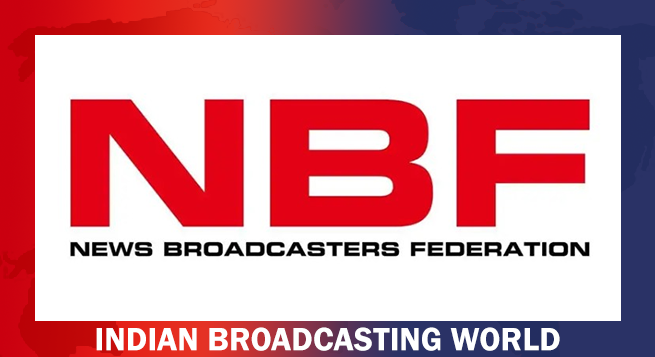 NBF issues another advisory to member TV news channels
NBF issues another advisory to member TV news channels  Govt directs OTT platforms to stop airing Pak content
Govt directs OTT platforms to stop airing Pak content 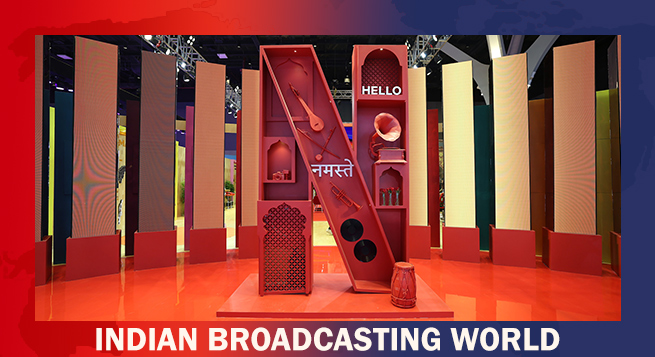 Netflix to have AI-powered iOS search in TV app revamp
Netflix to have AI-powered iOS search in TV app revamp  India sets up panel to review copyrights laws, AI disputes
India sets up panel to review copyrights laws, AI disputes 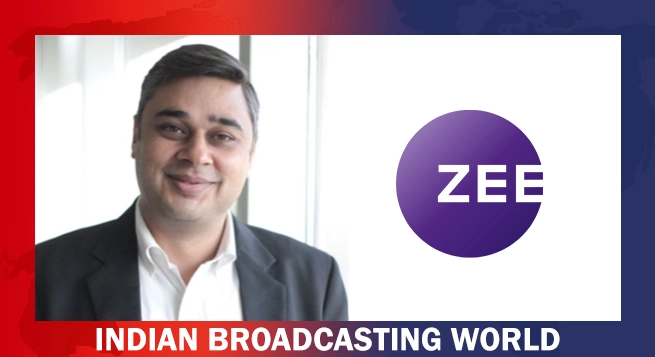 ZEEL appoints Rohit Suri as Chief Human Resource Officer
ZEEL appoints Rohit Suri as Chief Human Resource Officer 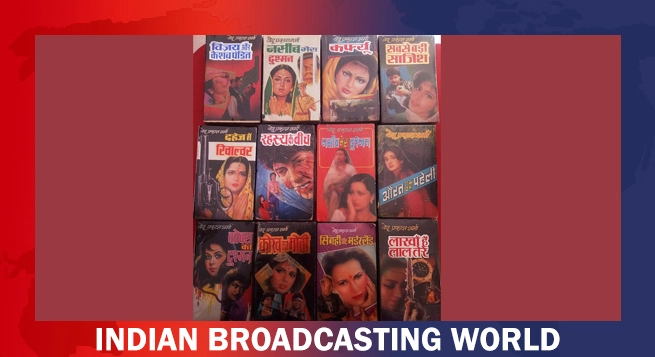 Ved Prakash Sharma’s bestselling novels to get film adaptations
Ved Prakash Sharma’s bestselling novels to get film adaptations 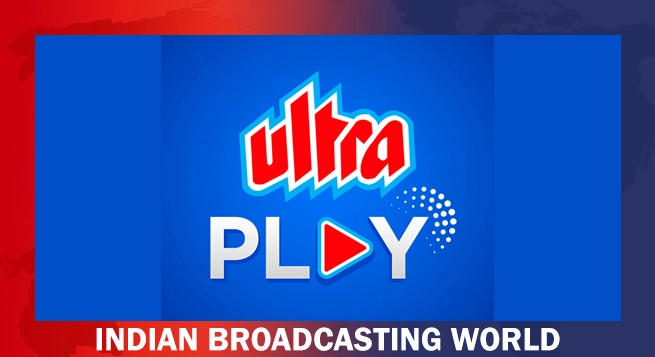 Ultra Play celebrates iconic Bollywood mothers with content lineup
Ultra Play celebrates iconic Bollywood mothers with content lineup 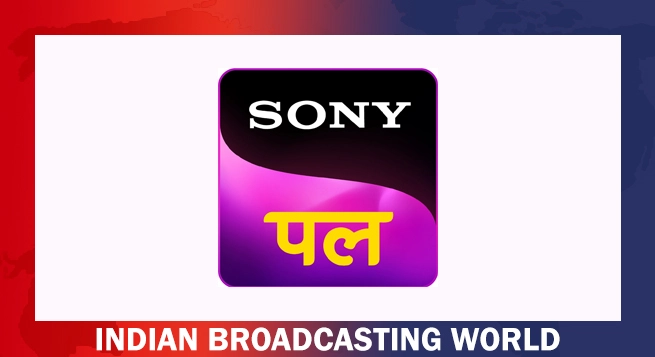 Sony PAL records 15.6% weekly reach in Week 17: BARC Report
Sony PAL records 15.6% weekly reach in Week 17: BARC Report 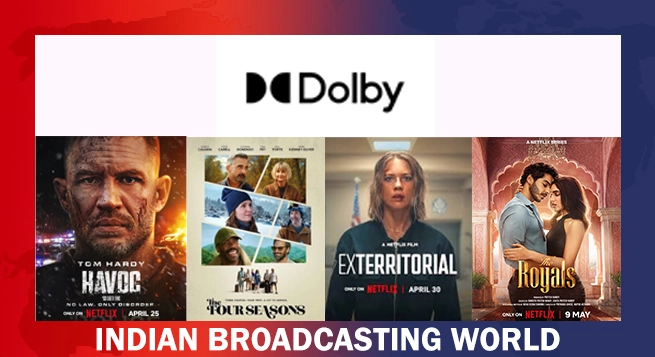 Dolby announces Mother’s Day special content lineup
Dolby announces Mother’s Day special content lineup 


